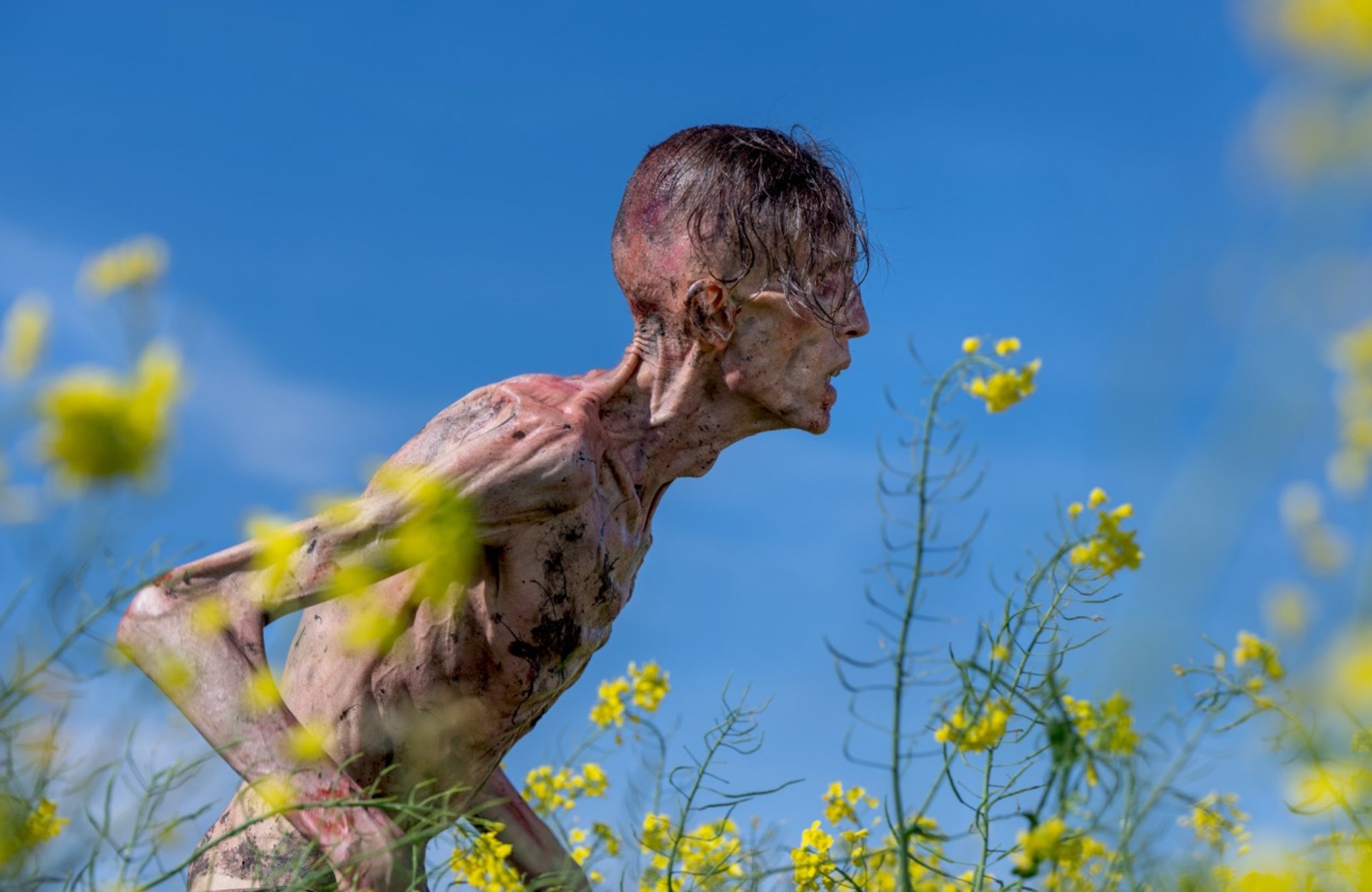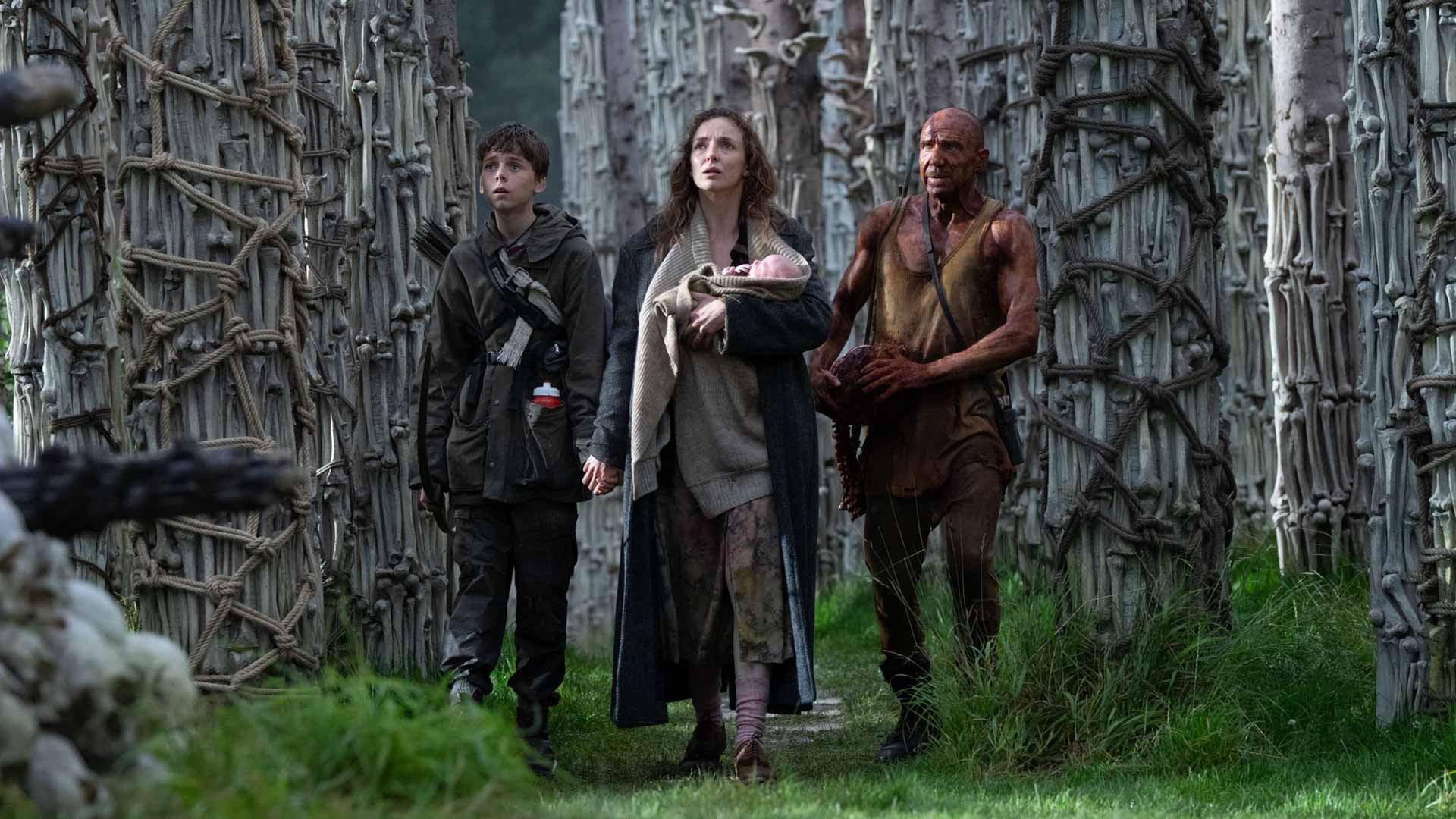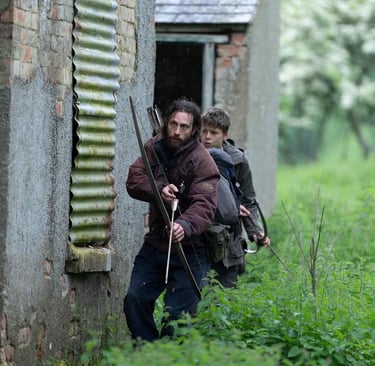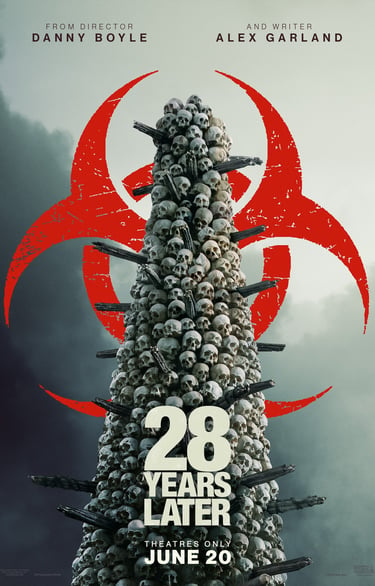“Your home for fearless film reviews, the latest entertainment news, and unfiltered movie rants.”
28 Years Later – Review: Brutal, Unforgiving, and Danny Boyle’s Darkest Return Yet
Danny Boyle’s 28 Years Later is a chilling, emotional ride through a smarter Rage virus. Read our full spoiler-free movie review and verdict.
The Tipsy Critic
6/21/2025




28 Years Later (2025)
Release Date: June 20, 2025
Director: Danny Boyle
Starring: Jodie Comer | Alfie Williams | Aaron Taylor-Johnson | Ralph Fiennes
Genre: Horror / Thriller / Post-Apocalyptic
Danny Boyle returns—and this time, he’s not pulling any punches.
With 28 Years Later, the long-awaited third chapter in the Rage Virus saga, Boyle resurrects a decimated world and injects it with even more dread, despair, and unexpected beauty. This isn’t just a horror sequel—it’s a gut-wrenching survival tale that refuses to coddle its audience. It's grim, feral, and emotionally charged.
I’ll be honest—I hadn’t seen 28 Days Later or 28 Weeks Later before watching this. A quick YouTube recap had to do. And to my surprise? That was enough. Boyle and screenwriter Alex Garland crafted this story so carefully that it functions as both a standalone thriller and a spiritual continuation. You don’t need to know what came before to feel the sting of what comes next.
I went in blind. No trailers. No spoilers. Just a title and a legacy. What I got was something that felt like The Last of Usmeets Children of Men, with that same blend of hopelessness and raw humanity. And from the very first frame, it grabsyou.
Plot Recap: A Return to Rage, Isolation, and Intensity
Set almost three decades after the outbreak that shattered Britain, 28 Years Later shifts the focus to Lindisfarne, a secluded island off the UK coast. The survivors here have carved out a quiet, if brutal, existence—far from the chaos of the mainland. They grow their own food, govern their own rules, and avoid all contact with the outside world. The Rage Virus is a ghost story to the island’s younger generation—until it isn’t.
At the heart of this story is Isla, a terminally ill mother whose health takes a sharp decline. Her son, Spike, desperate to save her, convinces Jamie—Isla’s estranged partner—to journey with him to the mainland in search of medical help. What begins as a mission of mercy quickly turns into a descent into hell.
The mainland is no longer just infected—it’s changed. Savage remnants of society lurk in the shadows. And then there’s The Alpha, a new breed of infected whose intelligence and brutality redefine what it means to be hunted.
This isn’t just a zombie movie—it’s a meditation on survival, sacrifice, and what happens when humanity fractures too far. Every decision comes at a cost, and as the characters move deeper into danger, the lines between mercy and madness blur.
Cast & Performances: Grit, Grief, and Rising Stars
One of the film’s greatest strengths is its cast. Every performance feels lived-in and layered, with emotional weight that cuts through the chaos.
Alfie Williams, who plays Spike, is an absolute breakout. He brings youthful desperation and impulsive energy to the role, constantly walking the line between hope and recklessness. Spike is a character who makes frustrating decisions—but Williams makes you understand every one of them.
Jodie Comer, as Isla, delivers a deeply affecting performance. Even in scenes where she’s bedridden, she commands the screen with quiet power. Her relationship with Spike is tender and tragic, and her chemistry with Aaron Taylor-Johnson’s Jamie adds complexity to what could have been a simple love triangle. Instead, it becomes a story about regret, forgiveness, and impossible choices.
Aaron Taylor-Johnson impresses as Jamie, a man hardened by past trauma but still clinging to the scraps of family he left behind. His dynamic with Spike is tense and uneasy—at times combative, at times paternal. You sense he wants to be better, but doesn’t know how.
And then there’s Ralph Fiennes as Dr. Ian Kelson. His role is small but unforgettable. Calm, clinical, and unnerving, he represents the cold logic of survivalism taken too far. Every line drips with quiet menace.
But the real showstopper? The Alpha. Played by an uncredited actor (rumored to be motion-captured), this creature isn’t just another infected. He’s faster, smarter, and more terrifying than anything we’ve seen in the franchise. Boyle films him with a mix of reverence and fear—you never quite know where he’ll strike next.
Direction, Visuals & Tone: Danny Boyle, Unleashed
Danny Boyle is back with a vengeance, and 28 Years Later might be his most visually aggressive film yet. He leans into the chaos with confidence, using grainy handheld shots, staccato editing, and oppressive close-ups to pull us directly into the madness. This isn’t clean horror—it’s ragged, frenzied, and occasionally overwhelming.
One standout sequence juxtaposes serene island home video footage with carnage on the mainland, underscored by a distorted lullaby. It’s haunting, poetic, and deeply disturbing. This is Boyle at his boldest—melding horror and artistry without compromise.
The film’s pacing is deliberate—quiet tension erupts into jarring violence. Long silences stretch nerves taut before a burst of blood snaps them. There’s no cheap jump scares here. When violence happens, it matters. It hurts. And it leaves a mark.
Boyle’s world feels depressingly real. Crumbling buildings, looted towns, and vast empty roads stretch endlessly. But it’s not just set design—it’s the way he captures stillness, giving the viewer time to feel the weight of everything that’s been lost. Music & Sound: Unexpected Energy in a Wasteland
One of the film’s most surprising elements is its soundtrack. Instead of slow, ambient dread, Boyle and composer Geoff Barrow (of Portishead) opt for an electronic, percussive score that builds momentum like a ticking bomb.
Especially in the film’s final act, the music goes full throttle—pulsing beats and chaotic synths heighten the sense of urgency and mania. At first, it feels almost too upbeat. But then it clicks: this isn’t music for mourning—it’s music for survival.
Boyle also knows when to pull it all back. Some of the film’s most terrifying moments are silent—just the echo of footsteps, a shallow breath, or the distant scream of something approaching too fast. Sound is used like a weapon here. And it’s devastatingly effective.
Public Feedback: Divisive, Raw, and Already a Cult Hit
Audiences are torn—but deeply engaged. Die-hard fans of the original films are split. Some applaud Boyle’s bold direction and philosophical tone, while others miss the stripped-down horror of 28 Days Later. But almost all agree: this is not a safe sequel.
Newcomers like myself? Many are hooked. The emotional depth and layered characters add something rare to post-apocalyptic cinema. Spike and The Alpha in particular are already generating buzz online, with TikTok edits, fan theories, and viral reactions popping up within hours of release.
That said, not everyone’s on board. Some viewers have pointed to slow pacing in the second act and an ending that feels more symbolic than satisfying. But even critics of the film admit—it lingers. Whether you love it or not, it leaves a scar.
⚠️ Controversy: Political Undercurrents and Harsh Imagery Spark Debate
Like many modern horror films, 28 Years Later isn’t shy about its subtext. Themes of forced isolation, pandemic denial, and post-truth politics are woven throughout, often without spelling them out. For some, this subtlety is what makes it so resonant. For others, it hits too close to home.
One scene in particular—depicting infected children locked in a school-turned-prison—has sparked online backlash. While not gratuitous, it’s deeply unsettling, and some have questioned whether it crosses a line. Parents’ groups and some international ratings boards are already pushing for edits in future releases.
Others have criticized the film for being “too arthouse” or “overly symbolic,” suggesting it prioritizes aesthetics over scares. But that’s also what sets it apart. 28 Years Later is not a rollercoaster—it’s a descent. And it dares to be uncomfortable.
Final Verdict: Brutal, Grimy, and Surprisingly Personal
I didn’t expect 28 Years Later to hit this hard.
It’s more than just a return to rage-infected chaos — it’s a stripped-down, bleak survival story that actually earns its emotion. I went in blind, without seeing the earlier films, but this worked completely as a standalone.
The action is raw, the tension is sharp, and the human drama feels earned. The Alpha? Genuinely one of the most compelling and terrifying antagonists I’ve seen in a horror film recently. His presence alone elevates the film. I have to give credit to Danny Boyle for leaning into that grimy, handheld intensity — it makes the world feel dangerous and unstable in the best way. But this isn’t a perfect movie. Spike’s character, while realistic, bordered on too frustrating at times. His recklessness felt forced in spots — like the writers wanted to create drama instead of letting it unfold naturally. And while I loved the bleak tone, the second act dragged slightly. It dipped into repetition before things ramped up again.
Also, while the visuals are bold, some moments were so chaotic they became hard to follow. That might be intentional, but it occasionally pulled me out instead of pulling me in. Still, for a trilogy closer (or potential franchise reset?), this one works. It’s emotionally grounded, intensely bleak, and more character-driven than I expected. Definitely worth watching — just don’t expect easy answers or clean thrills.
Final Rating: ⭐️⭐️⭐️⭐️⭐️⭐️⭐️⭐️ (8/10)
Unflinching, emotional, and masterfully directed. 28 Years Later doesn’t just deliver horror—it delivers legacy.
➡️ For more movie reviews, industry controversies, and what’s worth watching next—visit The Tipsy Critic
📲 Follow @thetipsycriticreview on Instagram for real takes, no fluff.








As an Amazon Associate, I earn from qualifying purchases.
